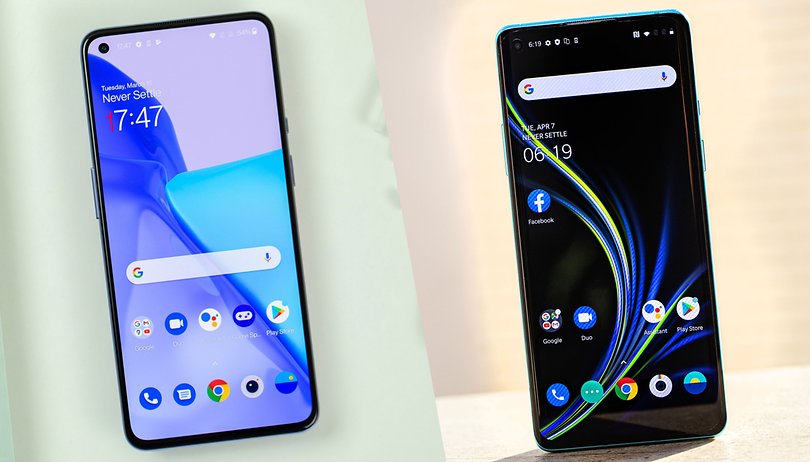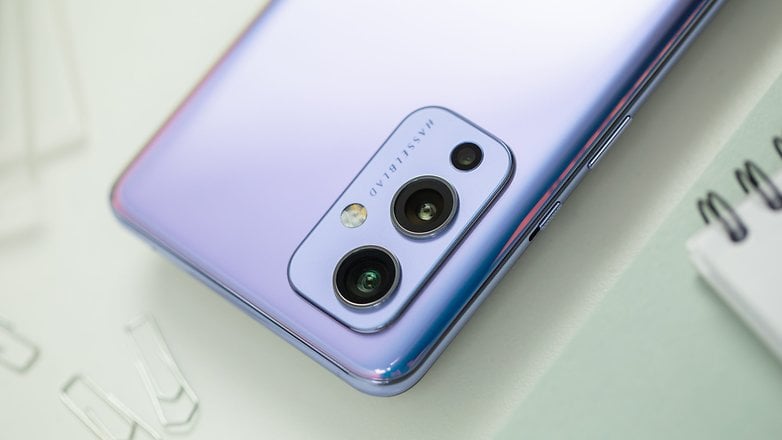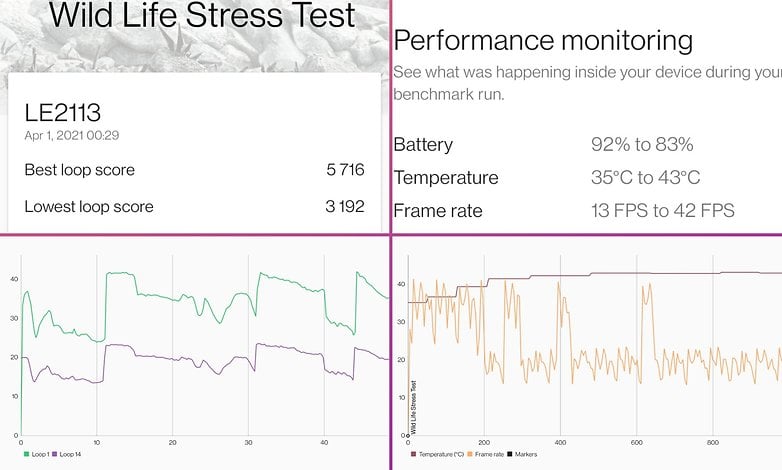OnePlus 9 vs. OnePlus 8: is it worth the upgrade?


After the launch of a new smartphone, one question that always comes to everyone's mind is this: Is it worth forking out money to upgrade your device from the previous generation? In the case of the OnePlus 9, the manufacturer has promised significant improvements to the camera as a result, the image quality. But again, is this alone a significant enough reason to upgrade? Let us explore!
Now, I am sure this is not the first time anyone has come up with a similar question. In fact, Ben recently tackled the same predicament in a comparison article on the Galaxy S20 and Galaxy S21 models. In the case of the OnePlus 9 series, most of the new feature addition came to the Pro model. Effectively, what I mean to say here is that the OnePlus 9 Pro is the one to go for in case you are looking for a major upgrade.
OnePlus follows a semi-annual release pattern and in the case of the OnePlus 9, its rightful predecessor is the OnePlu 8T. However, given that it's been only around for six months, chances are low someone is already seeking an upgrade from the 8T. The OnePlus 8, on the other hand, is now a year old and there are several folks who do follow a yearly cycle when it comes to phone purchases. For the same reason, we will focus on the OnePlus 8 and the OnePlus 9 in this article.
Talking points:
- OnePlus 9 vs. OnePlus 8:Specifications compared
- Positives
- Negatives
- Conclusion: Should I upgrade or wait?
OnePlus 9 vs. OnePlus 8: head-to-head comparison
| Model | OnePlus 9 | OnePlus 8 |
|---|---|---|
| Processor | Qualcomm Snapdragon 888 64-bit, 5nm octa-core |
Qualcomm Snapdragon 865 64-bit, 7nm octa-core |
| Memory (RAM / internal) | 8 GB / 128 GB 12 GB / 256 GB |
|
| Expandable memory | None | |
| Dual SIM | Yes | |
| Screen | 6.55-inch Fluid AMOLED / FHD+ (2,400 x 1,080 pixels) display at up to 120 hertz | 6.55-inch Fluid AMOLED / FHD+ (2,400 x 1,080 pixels) display at up to 90 hertz |
| Size | 160 x 74.2 x 8.7 mm | 160.2 x 72.9 x 8 mm |
| Weight | 192 grams | 180 grams |
| Connectivity | 5G, LTE, Wi-Fi 6, USB-C, NFC, GPS, Bluetooth 5.2 | 5G, LTE, Wi-Fi 6, USB-C, NFC, GPS, Bluetooth 5.1 |
| Main camera | 48 megapixels, with 1/1.43" at f/1.8 sensor | 48 megapixels, 1/2" at f/1.75 |
| Ultra wide-angle | 50 megapixels, with 1/1.56" at f/2.2 | 16 megapixels, at f/2.2 |
| Third camera | Depth: 2 megapixels | Macro: 2 megapixels |
| Front camera | 16 megapixels, with 1/3.06" sensor at f/2.4 | |
| Video | 8K at 30 FPS 4K at 60 FPS |
4K at 60 FPS |
| Battery Capacity | 4,500 mAh | 4,300 mAh |
| Charging technologies | 65 watts wired 15 watts wireless |
30 watts wired |
| Authentication | Under-display fingerprint reader | |
| Audio | Stereo speakers | |
| Materials | Gorilla Glass 5 | |
| Operating system | Android 11 with OxygenOS | |
| Charger included? | Yes, Warp Charge (65 W) | Yes, Warp Charge (30 W) |
| Debut price | €699 |
€649 |
| Launch | March 2021 | April 2020 |
The Positives
An improved camera
As Antoine points out in his review, the OnePlus 9 does offer a perceptible improvement in the photography department, even if it is premature to assess the impact of OnePlus' partnership with Hasselblad. Even with the more advanced technologies reserved for the OnePlus 9 Pro - such as the Sony IMX789 sensor and the telephoto lens, the OnePlus 9 still fares better than the OnePlus 8 and 8T models when it comes to the camera.
Also, there's a possibility that further improvements will arrive via future algorithmic changes in camera app updates, but that's not a guarantee and shouldn't influence a purchase decision.

The OnePlus 9 gets newer (and larger) sensors for both; the main and ultra-wide cameras. In addition, the main sensor offers the option to record files in 12-bit RAW format.
A flat, non-curved display
While this might be a downgrade for fans of curved displays, the fact is that the OnePlus 9 now features a flat display as opposed to the curved panels on the OnePlus 8. The transition to a flat panel might have been a cost-cutting move – but in the process, it has also made the OnePlus 9 easier to repair (and use).

120 Hertz refresh rate
There is no doubt here that the display used in the OnePlus 9 is superior to the one we sw on the OnePlus 8. Despite sporting a similar size of 6.55-inches and Full HD+ resolution (1080 x 2400 pixels), the refresh rate on the OnePlus 9 is a definite upgrade over the OnePlus 8.
While the OnePlus 8 inherited the 90 Hz Fluid AMOLED display from the OnePlus 7T, the OnePlus 9 gets a much faster 120 Hz panel. The result? Smoother and more fluid on-screen animations, not only in your regular OxygenOS user interface but in games as well.

For those who are concerned about the higher power consumption due to a faster refresh rate, the display automatically adjusts the frame rate based on what is being shown. OnePlus advertised that the refresh rate varies from 1 Hz (one frame per second) and above, but it dropped to a low of 30 Hz at most in Antoine's review.
Wireless charging capability
With the OnePlus 9 getting wireless charging support, OnePlus has fulfilled a long-time demand from hardcore fans. The wireless charging option used to be exclusive to the Pro models, but the OnePlus 9 (finally) ended this long-standing tradition. This feature, however, is still missing on the Indian variant of the OnePlus 9. So if you are in India, well, meh. While wireless charging on the OnePlus 9 isn't as fast on the OnePlus 9 Pro (50W), most users will be happy the option is there.

In addition, the OnePlus 9 is compatible with the Warp Charge 65T charger, as it delivers 65 watts of power when connected. That's really fast, and the charger itself is included in the box. That's more than twice as fast as the OP8's 30W charger and is capable of topping up the 4,500 mAh battery in about half an hour.
Negatives
Overheating issues
The performance offered by the Snapdragon 888 chipset has an unwanted side effect that was highlighted in Antoine's review: thermal throttling. This safeguard reduces the processor's speed when the device detects an excessive rise in temperature or to a degree that actually might harm the phone or the user itself.
This problem normally surfaces during the prolonged use of processor-intensive apps such as theoretical benchmarks. But it is possible for heat to influence performance during gaming sessions, with the FPS dropping to below normal rates after just a few minutes of play.

Conclusion: The OnePlus 9 is a good upgrade over the OnePlus 8
Despite the title above, switching from one model to the other basically depends on which features are interesting enough to you. If I were in such a situation, I would consider switching smartphones for the simple reason of wireless charging support apart from the 120 Hz refresh rate and improved camera performance.
If these features are not important to you, then only the superior performance of the Snapdragon 888 chipset remains, which in my case would be noticeable only in more advanced games, not to mention an increased risk of thermal throttling.
For those who change their smartphones every year, the OnePlus 9 is an interesting option for OnePlus 8 owners. Whereas for those who are still using the OnePlus 8T, or prefer to pick up a new device every two years, it may be to your advantage to wait a little while longer. Who knows? Perhaps the whispered OnePlus 9T will deliver an even more unique value-for-money proposition courtesy of OnePlus' partnership with Hasselblad...



















